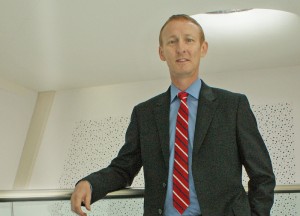9 July, 2013, by Francine Pickering
A Fresh Approach to Strategy
A Fresh Approach to Strategy: a look at where strategy goes wrong and fixes for when it does
Speaker: Jim Cowan from Cowan Global
0% of executives who use a SWOT analysis use the results of that analysis when developing their strategy.
That was just one of a number of (possibly) surprising statistics shared by Jim Cowan in his “Plain English” presentation on business strategy. Although, if you’d worked in any of the environments that Jim shared in his examples, you might not be that surprised.
But first he kicked off with a couple of definitions.
“Strategy” is simply “a plan or design for achieving one’s aims”, drawing in important distinction between goals and how you reach them (strategy), something that can all too often confuse the business leader.
“Strategic” means “of or pertaining to strategy”, that is, it’s not just a bit of jargon to throw out when you want to sound clever.
Four BIG issues
Jim identified four issues that need facing before you write your business strategy to ensure that it is the right strategy, not just a strategy, for your business.
- Failure to face the problem – all the “strategic” decisions in the world add up to a recipe for failure unless your strategy addresses any actual problems your business faces, Jim citing an example where a long history of bad industrial relations scuppered otherwise sound plans of one company.
- Mistaking goals for strategy – it can’t be said often enough, goals are what you want to achieve, strategy is how you intend to achieve them.
- Bad strategic objectives – you need to pinpoint the objectives that will actually help you to achieve your plan, not just dream up clever ideas and dress them up as “strategic” to justify them.
- “Fluff” – we’ve all read those reports and documents that don’t make a word of practical sense in actual English.
Jim highlighted two of the main problems that underlie the ability to develop a sound strategy.
- The inability to choose, otherwise known as “the procrastinator’s way forward”. It is essential to be able to prioritise but this process needs to be tackled in a way that identifies the strategic priorities, not just the personal preferences of people voting on it – the Condorcet’s paradox which can create conflicting preferences does little to help.
- The template approach/mentality, whereby a strategy is put together by pulling together standard or common elements from others’ strategies. This lazy approach fails to create strategy personal to your business. A better approach is to use the right tools (for example the SWOT analysis, or PESTLE), in the right way, to build a specific strategy.
Jim also touched on the characteristics of Mission, Vision and Values, another common source of confusion. Here’s a little test he gave us… whose Value Statement is this? And if you don’t know the answer, which sector is it from?
“Together, we strive to demonstrate these Values:
- Integrity, trust and respect
- Passion to succeed
- Executing with quality
- Driving creativity into everything we do
- Sharing with others
Hardly distinctive is it? Like every other aspect of developing your strategy, these need to be specific to your business, not things that anyone and everyone could just as easily claim as their own.
(The answer is below*).
So how do you take a fresh approach to strategy and avoid these pitfalls? Jim recommends these three steps:
- Get the diagnosis right by identifying the right problem or problems – you might look for three to five issues that need your attention.
- Get the guiding policy right – define the “how” rather than leap straight from the grand ambition to carrying out detailed work that might or might not support the strategy.
- Put in place coherent actions that fit with your strategy, not distract from it, and take you towards your goals.
And to finish, a short quote from Winnie the Pooh…
“Here is Edward Bear, coming downstairs now, bump, bump, bump, on the back of his head, behind Christopher Robin. It is, as far as he knows, the only way of coming downstairs, but sometimes he feels that there really is another way, if only he could stop bumping for a moment and think of it. And then he feels that perhaps there isn’t.”
*Philip Morris, international tobacco company
The audience said:
“Made me go back to the drawing board and rethink my strategy.”
“Great job, relevant content, good networking opportunity.”
“An opportunity to learn in a short, sharp burst.”
“Good reminders of easy traps to fall into when considering strategy.”
The Ingenuity Knowledge Exchange breakfasts are free and open to all business owners. The next event is on 1st October 2013 with the theme of 3D Printing: the next Industrial Revolution and sees our favourite futurologist, Chris Barnatt, Associate Professor of Computing & Future Studies from Nottingham University Business School explaining how this technology is being used currently and developed. Also, see a working 3D printer in action.

A fresh breath of air, incredibly aspiring lecture, as rightly said, made us to rethink some of our strategies.